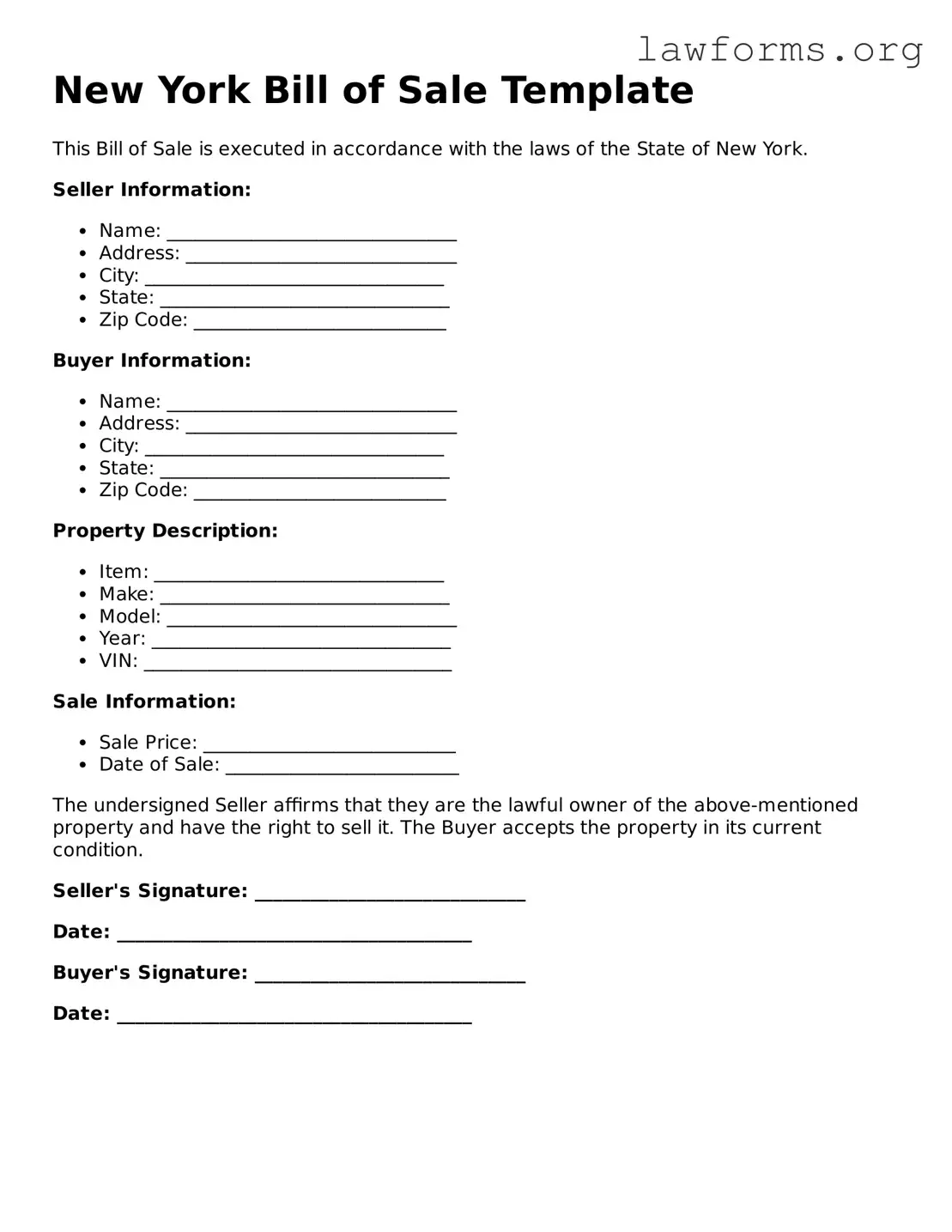Attorney-Approved Bill of Sale Template for the State of New York
A Bill of Sale is a legal document that serves as proof of the transfer of ownership of goods or property from one party to another. In New York, this form outlines essential details such as the buyer and seller's information, a description of the item being sold, and the sale price. Understanding how to properly complete this document is crucial for ensuring a smooth transaction.
Ready to fill out your New York Bill of Sale form? Click the button below to get started!
Customize Document Online
